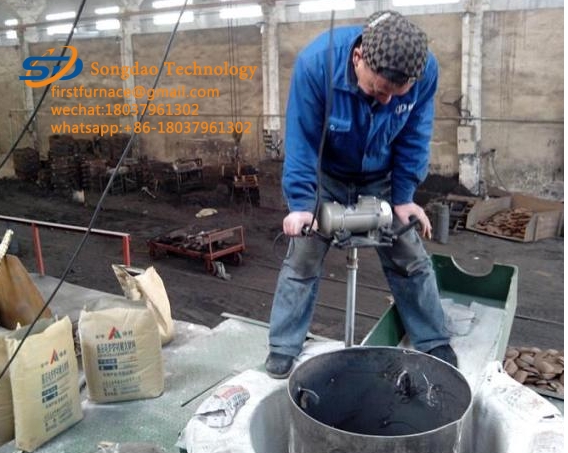- 24
- Feb
Maintenance Technology of Induction Furnace Wall Lining
Maintenance Technology of Induction Furnace Wall Lining
1. In the initial stage of use of the crucible, the sintered layer is thin, and high-power transmission should be avoided as much as possible, which will cause excessive electromagnetic stirring and damage the furnace lining.
2. When feeding, try to avoid smashing the crucible with materials, which may damage the crucible. Especially after the cold furnace, the strength of the crucible is extremely low, and special care should be taken to prevent the cracks from increasing, which may increase the possibility of molten metal infiltration and cause furnace leakage accidents.
3. After the furnace sintering is completed, the operators are required to have a strong sense of responsibility and always pay attention to checking the working conditions of the furnace lining to keep the entire system in good condition.
4. After the induction furnace is finished, no matter what the reason, the cooling water system should be ensured to circulate for about 12 hours, and the temperature in the furnace chamber should be less than 200℃, otherwise it will cause damage to the lining and coil or even scrap.
5. During operation or when the furnace is empty, the number and time of opening the furnace cover should be reduced to reduce heat loss and cracks caused by rapid cooling of the furnace lining.
6. The furnace should be full for normal production, and half furnace production is forbidden. In order to avoid excessive temperature difference and cause cracks.
7. During normal melting, it should be melted while adding materials, and it is not allowed to add materials after the molten iron is cleared. In particular, excessive addition of scrap iron will cause large fluctuations in the molten iron level, and the molten iron will easily penetrate into the unhealed furnace lining above the liquid level, causing accidental wear of the furnace.
8. For the newly built furnace lining, at least 3-6 furnaces should be used continuously, which is conducive to forming a sintered layer with sufficient strength.
9. If the smelting is over, no molten iron is allowed in the furnace to avoid the large temperature difference between the upper and lower sides of the furnace body, which may cause the crucible to be strained and cracks.

